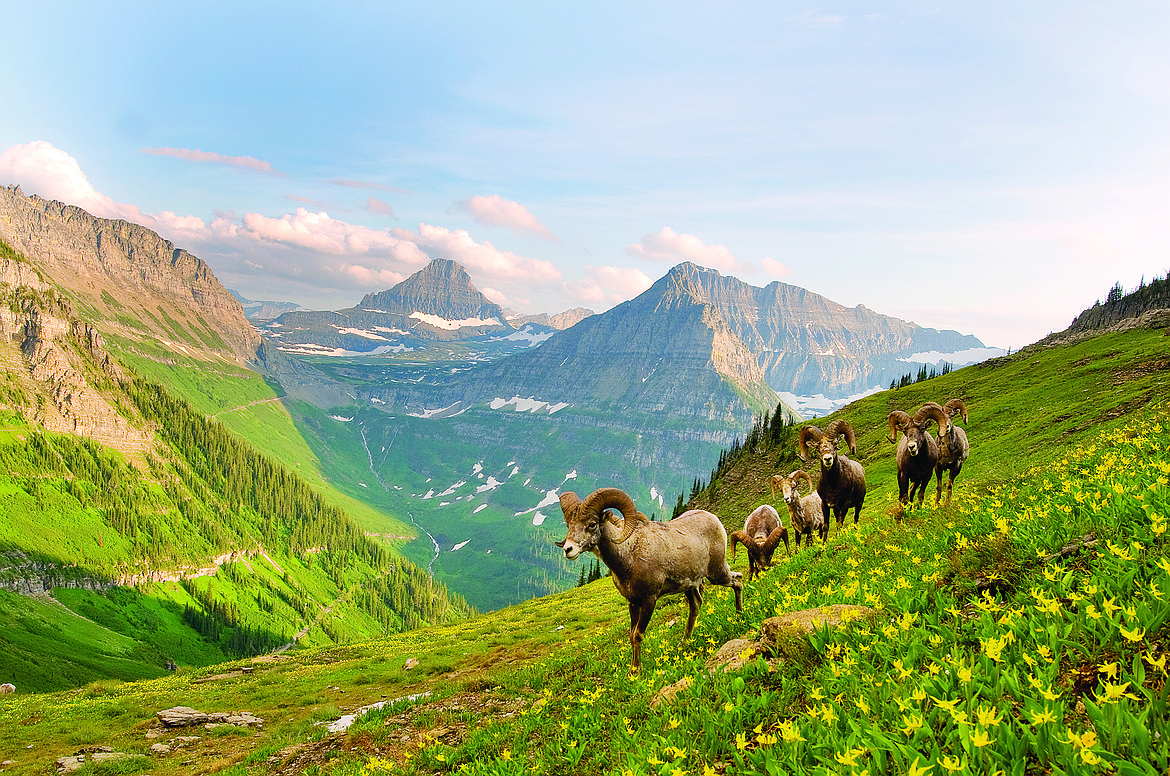Sun Road plan proposes solutions for park congestion
KIANNA GARDNER | Hagadone News Network | UPDATED 4 years, 9 months AGO
A plan identifying a range of possible actions for better managing congestion along Glacier National Park’s Going-to-the-Sun Road corridor was finalized by the National Park Service Wednesday.
The Going-to-the-Sun-Road Management Plan has been in the works since 2013, after Glacier experienced a sharp spike in visitation — an increase that later was outpaced in 2017 when the park’s visitor count topped 3.3 million for the season.
Some measures within the document require minimal preparation, a Wednesday news release stated, while others will need extensive planning. Many of the actions focus on addressing congestion at popular locations in the park such as Logan Pass, Avalanche and other key trailheads.
The measures are outlined in a 67-page “finding of no significant impact” report on the National Park Service’s website. The document presents reasons why the park has concluded there are no significant environmental impacts projected to occur, should the actions be implemented.
One major action in the report focuses on expanding the park’s existing shuttle system by adding new stops and buses to the park’s aging fleet.
Buses may soon be stopping at the Fish Creek Campground near Lake McDonald and eventually at a 100-car parking lot that has been proposed for the West Side Construction Staging Area at the old ball field near the main west entrance.
Other actions related to parking include expansions to lots on the east side of the park at the St. Mary Visitor Center and at the 1913 Ranger Station by about 50 spaces total. A “historic exit” at the Avalanche Campground also would be restored in an effort to improve traffic circulation in the area, which sometimes reached capacity by 6 a.m. during the 2020 season.
The park also may restrict overnight parking in the corridor during peak season and implement a day-use parking permit system beginning with Logan Pass, St.Mary and Virginia Falls Trailhead. Design parameters for the proposed system include holding a percentage of permits for short-term purchase and timed parking permits that would only be valid for parking during a specified time and when accompanied by an entrance pass.
THE PLAN also includes measures related to bike travel and hiking trail congestion.
Enhanced opportunities for bike use include adding bike trailers to shuttles, installing bike racks and consideration of bike-only events, such as “car-free mornings.” The document also suggests adding a 1.5-mile bike trail from the 1913 Ranger Station to St. Mary Campground, Visitor Center and townsite.
As for hiking trails, one action includes designating one-way travel along the Highline Trail from Logan Pass to the Big Bend cutoff during peak season, though exceptions would be allowed “in the event of wildlife encounters and/or other emergencies,” the plan states. A new exposed soil path from the main trail down to the Big Bend pullout would be constructed.
Commercially guided hikes or organized group hikes ranging from 25 to 35 people may be implemented at busy hike areas such as the Highline Trail and St. Mary and Virginia Falls Trail. Trips would be limited to two per day, per operator.
An exception to the group size at St. Mary and Virginia Falls would be established for National Park Service-led ranger hikes that would be capped at 49 people, a number that is based on St. Mary Lake boat capacity.
THE PLAN emphasizes that initial management actions are subject to funding availability. Top priority actions include visitor capacity and monitoring strategies, the expansion of the shuttle system, a timed parking permit system for popular locations, parking lot expansions and more.
Park officials have emphasized the plan is a resource meant to guide future management decisions. Now that the report is complete, the National Park Service will “examine when and where to use these tools and take action,” a news release stated.
“The range of potential actions represents tools in a toolbox that the park can implement when certain triggers are met” Glacier National Park Superintendent Jeff Mow, said in a prepared statement. “There is no intention that the park would implement all the proposed actions at once or even implement them all over time. The rapid nature of change in visitor use patterns, visitor demographics, technology, and conditions in the park calls for a much more adaptive and flexible set of management actions.”
The document emphasizes the measures would “support the park’s ability to respond to future events, trends, risks, and threats, including those that are unknown or uncertain” and would “maintain and provide a variety of visitor experiences throughout the Going-to-the-Sun-Road corridor, including solitary, social, family friendly, and physically rigorous recreation.”
To review the report and other information go to https://parkplanning.nps.gov/projectHome.cfm?projectID=47660
Reporter Kianna Gardner may be reached at 758-4407 or [email protected]
ARTICLES BY KIANNA GARDNER

Vaccine mandate could impact staffing at Flathead nursing homes
Montana's long-term care facilities could face staffing challenges and financial uncertainty if the Biden administration moves forward with a plan to require Covid-19 vaccinations for staff at federally funded nursing homes.

Flathead Covid vaccination rate ticking upward
Health officials say Flathead County's Covid-19 vaccination rate is ticking upward by nearly 1% each week, a promising trend as the highly contagious delta variant continues to move through the valley's unvaccinated population.
Flathead COVID-19 surge strains hospital, health department
Flathead County continues to see an uptick in Covid-19 infections, hospitalizations and deaths. The county had 690 active cases on Wednesday — the highest number the area has seen since February, according to local health officials.

